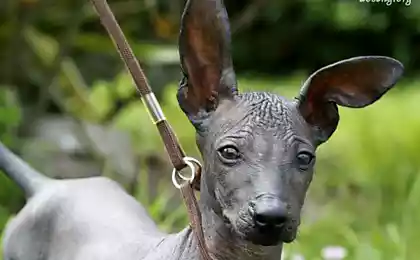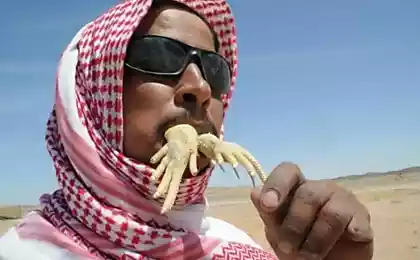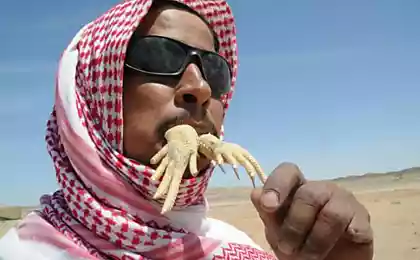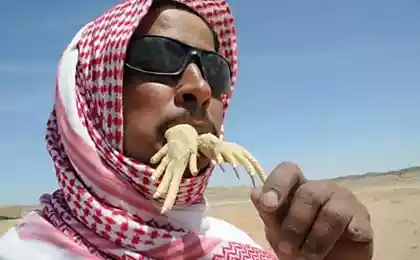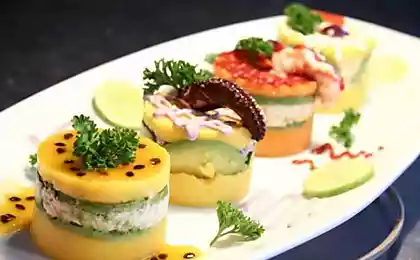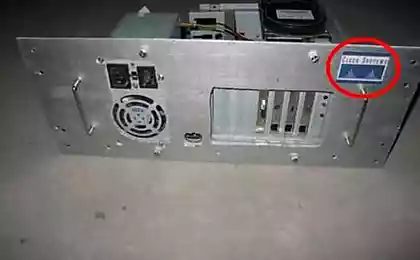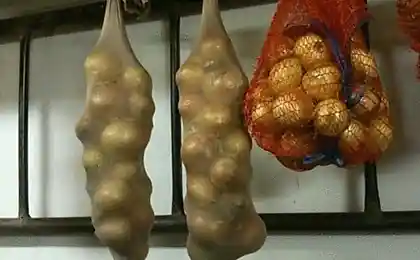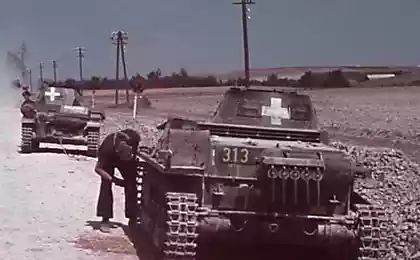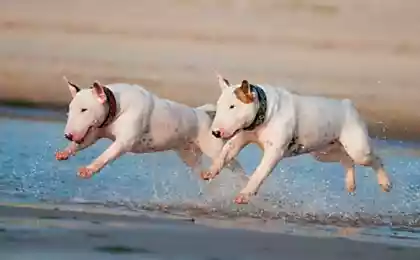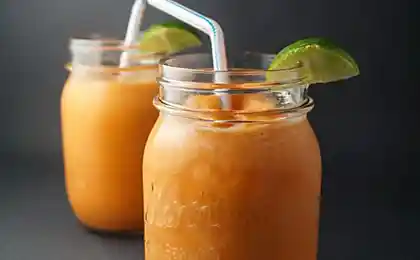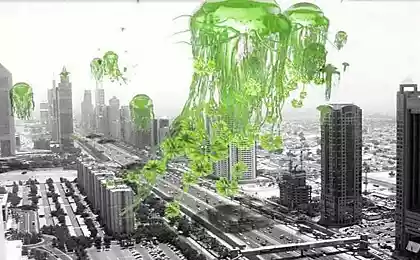444
Peruvian wit ...
Four residents of the village Likapa (Licapa), in the Peruvian Andes, and inspirer Gold Eduardo (Eduardo Gold) for the second week to manually return the 4756-meter peak Chalon Sombrero (Chalon Sombrero) former white. An unusual experiment supported the World Bank (World Bank).
2 photo + letter
via membrana
1. The workers do not use a brush and a paint poured on the slope. Over the past fortnight it thus managed to repaint the area of two hectares. There are still two peaks. That is, will fill another 70 hectares (photo BBC).
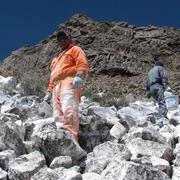
Twenty years ago the top of the mountain was completely covered with glaciers, regularly supplying water to residents of the surrounding villages. But over the last 30 years, 22% of Peruvian glaciers melted together with them bare and Chalon Sombrero. Meanwhile, to get water in the mountains of Peru - not an easy task.
Save the situation took a 55-year-old Gold. He offered to paint the peak of the snow-free eco-friendly white paint with the traditional structure of Peru: limestone Technical egg white and water. At the same time engaged in geoengineering Eduardo without any formal training.
The idea of self-taught glaciologist supported World Bank: in late 2009, the jury 100 Ideas to Save the Planet of the selected projects, Eduardo and another 24 lucky winners from around the world. Gold idea is simple: to return the snow or ice sheet can not build, but you can lower the temperature. For this it is necessary to increase the reflectivity of the mountain. Then the sun's rays will go back into space, not warming the earth's surface.
To do something similar, but with roofs of buildings in the world at one time proposed to US Secretary of Energy Steven Chu (Steven Chu), and later even created a special tiles change color.
Repainting the mountains will change the microclimate of the territory. "Cold generate cold", - said Gold. If the theory works in practice Eduardo (by the way, recently seen on the slopes of the snow is so rare), it is quite possible that the innovation will continue to carry out the plan and other peaks.
2. "We are living at the expense of livestock. No work, no cereals. Over the past 40 years, the river became shallow strongly, but the less water, the lower pasture and, therefore, nothing to feed the animals, "- says Pablo Parco (Pablo Parco), 65-year-old Likapy (photo BBC).

Source:
2 photo + letter
via membrana
1. The workers do not use a brush and a paint poured on the slope. Over the past fortnight it thus managed to repaint the area of two hectares. There are still two peaks. That is, will fill another 70 hectares (photo BBC).

Twenty years ago the top of the mountain was completely covered with glaciers, regularly supplying water to residents of the surrounding villages. But over the last 30 years, 22% of Peruvian glaciers melted together with them bare and Chalon Sombrero. Meanwhile, to get water in the mountains of Peru - not an easy task.
Save the situation took a 55-year-old Gold. He offered to paint the peak of the snow-free eco-friendly white paint with the traditional structure of Peru: limestone Technical egg white and water. At the same time engaged in geoengineering Eduardo without any formal training.
The idea of self-taught glaciologist supported World Bank: in late 2009, the jury 100 Ideas to Save the Planet of the selected projects, Eduardo and another 24 lucky winners from around the world. Gold idea is simple: to return the snow or ice sheet can not build, but you can lower the temperature. For this it is necessary to increase the reflectivity of the mountain. Then the sun's rays will go back into space, not warming the earth's surface.
To do something similar, but with roofs of buildings in the world at one time proposed to US Secretary of Energy Steven Chu (Steven Chu), and later even created a special tiles change color.
Repainting the mountains will change the microclimate of the territory. "Cold generate cold", - said Gold. If the theory works in practice Eduardo (by the way, recently seen on the slopes of the snow is so rare), it is quite possible that the innovation will continue to carry out the plan and other peaks.
2. "We are living at the expense of livestock. No work, no cereals. Over the past 40 years, the river became shallow strongly, but the less water, the lower pasture and, therefore, nothing to feed the animals, "- says Pablo Parco (Pablo Parco), 65-year-old Likapy (photo BBC).

Source:

